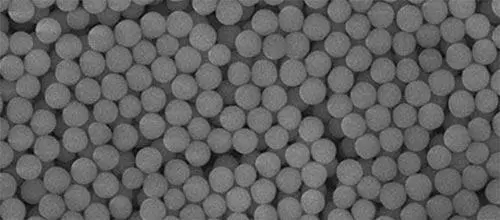The Use of Colloidal Silica in Surface Preparation
Colloidal Silica is a slurry that is used for final polishing in a number of industries. Unlike standard abrasive slurries, colloidal silica falls into a category called C.M.P, or Chemical Mechanical Polishing. It’s common in sapphire and silicon wafer manufacture, metallurgical sample preparation, and medical implant polishing.
A C.M.P process uses a combination of fine silica particles and a chemical reaction based on the PH and oxidation ability of the colloidal base to produce surface finishes that are generally unobtainable using fine abrasive slurries. Typically less than 2nm. Unlike conventional abrasive processes where the abrasive is cutting or plucking material from a substrate, a CMP process will oxidize a micro layer of a substrate and then this layer is brushed off using the fine, but highly concentrated, silica particles.
In a normal abrasive slurry you can expect 15-20wt% concentration of abrasive particles, but in a colloidal slurry as much as 50wt% of silica particles can be present. This greatly increases the amount of silica (SiO2) particles that work on a substrate making the polishing very uniform and efficient. Also, the SiO2 particles are incredibly uniformly spherical, which again, is difficult to match with standard abrasive particles where the shape is far less uniform.
Silica particles in colloidal suspension

Applications:
Colloidal silica is a very common final polishing stage for metallographic sample analysis. This is because it is generally guaranteed to give a damage free specimen. These types of samples are viewed under high magnification, so it is important when looking at the structures of a material that damage caused by the preparation processes is not confused with the material make up itself. For modern material analysis software, a scratch free finish is critical. Scratches or any other damage on a specimen can confuse the software giving incorrect readings. This is particularly important with hardness testing software.
For some metallographic samples, the chemical make-up of colloidal silica can be used to etch the surface revealing grain boundaries and other structures.
Colloidal Silica is also used as a final polishing process after sub-micron alumina pre polishing for the preparation of mineral samples ready for Electron Back Scatter Diffraction (EBSD). The reason for its use is the same as any other application in that it gives a perfect damage free sample surface. The EBSD analysis reveals more than standard X-ray diffraction and is now a standard tool for fine –scale structure of intact coralline skeleton analysis.
Methods of use:
Because of the oxidizing nature of colloidal silica it will attack any ferrous machine parts. For this reason all wet machine parts must be either non-ferrous or epoxy coated. The Kemet KemCol 15 machine is a good example of this.
Most Metallurgical sample preparation machines use plastic cases and aluminium platens so no special features are needed.
Colloidal silica is usually used in combination with a polyurethane polishing pad which has voids within the structure of the pad to hold the colloidal silica. It is applied using a peristaltic pump and a constant drip feed similar to a conventional abrasive lapping process. It’s important to maintain the wetness of the process so there is no drag out of material.
In order to generate the most efficient action it is necessary to generate some heat within the process. Like all chemical reactions, heat is a good catalyst, so in some cases the colloidal silica is warmed externally. However too much heat will result in the colloidal silica drying out too quickly leaving agglomerated particles of silica that will scratch. Kemet has developed its own non crystalizing colloidal silica COL-KNC for industrial polishing applications where scratch free finishes are required but high volumes and pressures are needed to minimise processing times.
For some polishing applications, typically softer materials, a short NAP cloth is used instead of a polyurethane pad. The Kemet MRE pad is particularly good for brass and copper polishing.
Titanium Sample Before and after CMP


